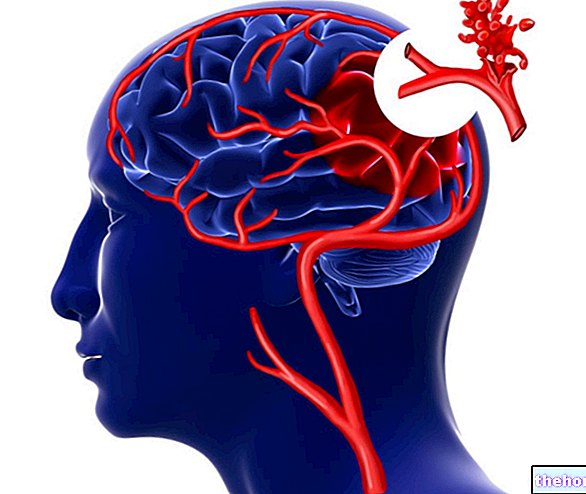Generality
Metabolic syndrome is a clinical condition that deserves special attention due to its severity and spread.
This term does not indicate a single pathology but a set of predisposing factors which, combined together, place the subject in a high risk range for diseases such as diabetes, cardiovascular problems in general and hepatic steatosis (fatty liver).
Index Article
Diagnostic Criteria
To be able to talk about metabolic syndrome, AT LEAST THREE of the following risk factors must be present at the same time:
- Blood pressure above 130/85 mmHg
- Blood triglycerides above 150 mg / dl
- Fasting blood glucose above 110 mg / dl (100 mg / dl according to the ADA)
- HDL cholesterol below 40 mg / dl in men or 50 mg / dl in females
- Abdominal circumference greater than 102cm for males or 88cm for females
Based on these benchmarks, a subject with metabolic syndrome could have the individual values perfectly normal. In fact, we recall that:
- to be able to speak of hypertension, the pressure must constantly exceed 140/90 mmHg;
- in hypertriglyceridemia blood triglycerides exceed the limit value of 200 mg / dl
- we can speak of diabetes if fasting blood sugar exceeds 126 mmHg;
- an HDL cholesterol value lower than 40 mg / dl or 50 mg / dl (females) is not sufficient, on its own, to place the patient in a high cardiovascular risk range;
- if the abdominal circumference exceeds 102 or 88 centimeters (females) the subject is actually overweight and his fat mass is concentrated mainly in the abdominal area (android or apple obesity).
Causes and Risk Factors
Metabolic syndrome affects nearly half of adults over the age of 50-60. An "incidence, this, already alarming in itself, but which is likely to grow in the coming years in the wake of the spread of childhood obesity.
The most important risk factor is in fact OVERWEIGHT: the more this is accentuated and the greater the chances of being affected by the metabolic syndrome.
An excess of body fat, especially if concentrated in the abdominal region, leads to an imbalance in the metabolism of fats and sugars which results in hyperinsulinemia (high level of insulin in the blood, indicating an "increased resistance to this hormone). . While in the most severe cases this situation worsens to the point of quickly causing the onset of diabetes, in the milder cases a multifactorial condition known as metabolic syndrome develops. The finding of elevated insulin values in the blood, compared to almost normal blood glucose values, represents an indirect index of this condition.
The risk of developing metabolic syndrome increases with age and is almost always a direct consequence of WRONG LIFE STYLES (reduced physical activity, poor diet, alcohol and / or drug abuse).
Given that today many children and teenagers are also struggling with extra pounds, the incidence of metabolic syndrome is also increasing among young adults and adolescents.
Most people with metabolic syndrome feel well and frequently have no particular symptoms.
Symptoms and Complications
For further information: Metabolic Syndrome Symptoms
People with this condition run a greater risk of suffering some cardiovascular, kidney, eye and liver diseases (this risk is two to four times higher than normal people).
When insulin resistance occurs, cells require a higher than normal amount of insulin in order to absorb blood glucose and keep blood glucose levels normal.
In such conditions, the beta cells of the pancreas responsible for the production of insulin undergo a slow degenerative process caused by too much work. Thus the foundations are laid for diabetes, with all the negative consequences of the case.
Treatment and Prevention
The best way to treat metabolic syndrome is to increase your physical activity level and reduce your body weight.
In this paragraph we deal only with physical exercise, while nutrition has been extensively dealt with in a separate article (see: diet and metabolic syndrome). As for drugs, the reader will find the necessary insights in this article.

When the metabolic syndrome knocks on the door, simple lifestyle changes are essential to improve the situation and avoid the onset of severe complications.
Daily physical activity, for example, can be increased with a morning walk of a few kilometers, with a few more flights of stairs or with a pedal stroke after sunset. It is very important that the physical exercise is regular (at least four times a week) and that overall lasts at least 50-60 minutes without too many interruptions.
Some benefits of physical exercise applied to the treatment of metabolic syndrome:
- increases insulin sensitivity;
- prevents cardiovascular diseases;
- induces a less atherogenic lipid profile;
- reduces VLDL triglyceride levels;
- increases "good" HDL cholesterol;
- reduces "bad" LDL cholesterol;
- reduces blood pressure levels significantly in patients with hyperinsulinemia;
- promotes weight loss.
- Helps prevent Type II Diabetes by increasing insulin sensitivity and glycemic control, thanks to:
- increased blood flow to insulin sensitive tissues
- greater proportion of type I muscle fibers (more sensitive to insulin action than type II fibers);
- reduction of total fat and in particular of the "insulin-resistant" abdominal fat;
- increase of the post-receptor action of insulin (increase of glut-4 in the muscle and its translocation to the cell surface);
- it helps to regain a healthy weight, a fundamental factor in keeping the metabolic syndrome and all its unpleasant consequences at bay.
See Also: Drugs for the Treatment of Metabolic Syndrome
Other articles on "Metabolic Syndrome"
- Metabolic Syndrome - Drugs for the treatment of the Metabolic Syndrome
- Diet and metabolic syndrome
- Metabolic syndrome and lifestyle
- Metabolic syndrome and nutrition
- Metabolic syndrome and insulin resistance
- Metabolic syndrome: whose fault is it?



























